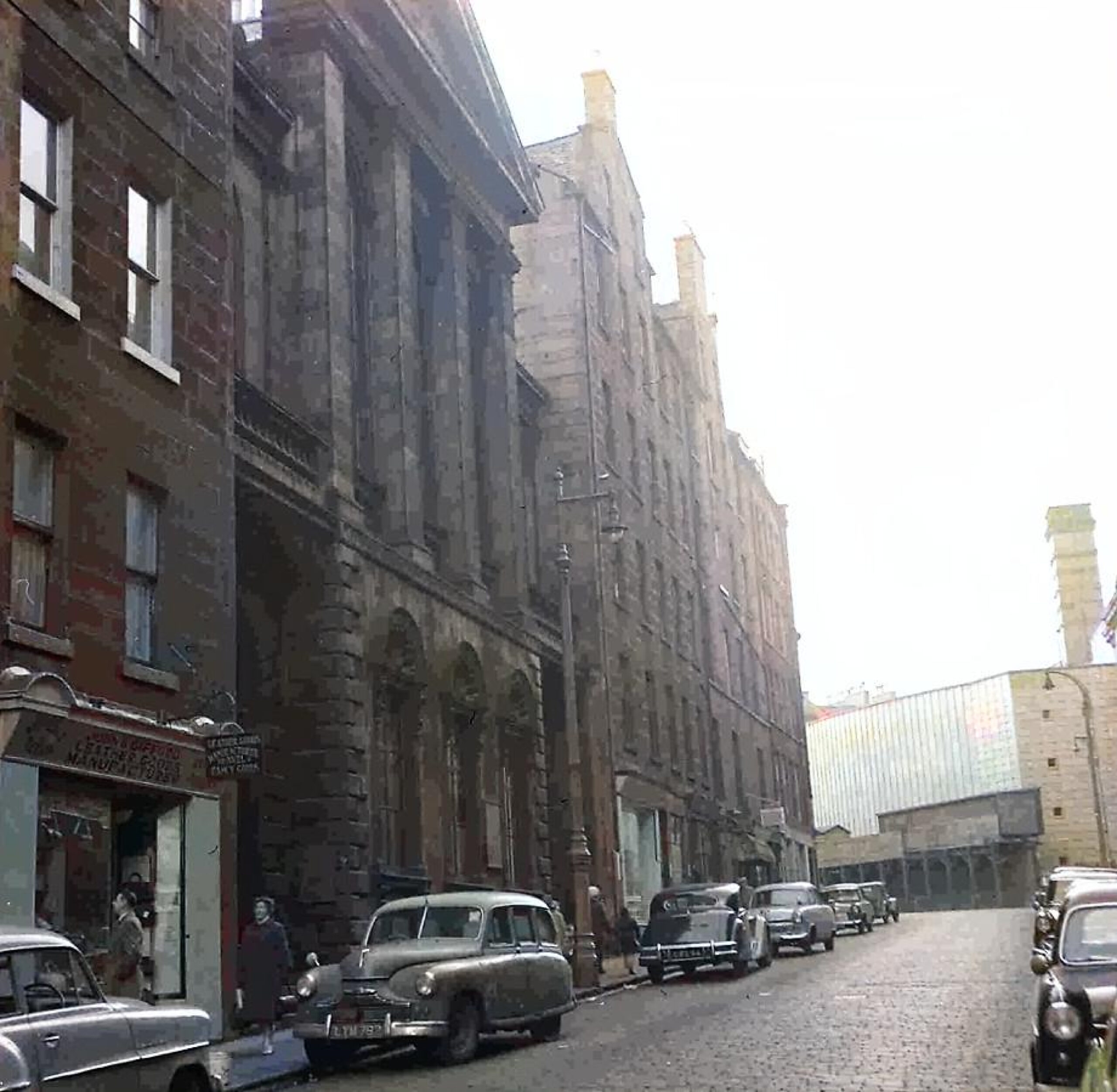The church building was acquired by the University of Edinburgh in 1961 and soon became one of its reading rooms. Sadly, it was impossible to find any visual material from this time. However, some memories from this period still remain. Peter Freshwater, the former Deputy University Librarian, and a student at Edinburgh in the early 1960’s recalls:
“After the Second World War, the University Library had run out of space and had begun establishing a series of separate undergraduate reading rooms in nearby buildings in the central area of the University. The New and North Reading Rooms were in Old College itself, in what is now the Talbot Rice Art Gallery and the east end of the Law Library respectively; the Languages and Literature Reading Room was on the top floor of Minto House in Chambers Street (now the department of Architecture); and College Street Church opened as the History Reading Room in 1961. Later it was to accommodate other subjects as well. In 1964, the North and Minto House Reading Rooms were closed. Their facilities and collections were transferred to a new reading room, the Ramsay, established in Martinot’s Warehouse in Nicholson Square, which is now Alison House, the home of the Edinburgh University’s Reid School of Music.
Except for the gallery which ran round the east, north and west sides of College Street Church, and the raised sanctuary dais, the furnishings and fittings were stripped out, leaving behind the hot water pipes and little else. One striking feature of the building which was retained, as it had to be, were the cast iron columns with their elaborate acanthus-leafed capitals, which supported the gallery. Only the ground floor of the church was used. The gallery was stepped, and thus not easily adaptable for library use; access to it was therefore locked to users.
Many of the tables for readers were located over the hot-water pipes, some being ingeniously constructed to accommodate the slope in the floor under the north gallery which would have raked the back pews. Accommodating over 221 users, College Street was the most commodious of the Reading Rooms, allowing more space for each user than any other. It was also the best heated, and many a leather sole was split from resting for too long on over-hot pipes. Moreover, because it stood alone with a main door, the Reading Room could be opened for longer hours than other parts of the Library without having to give access to other parts of buildings; it thus became the first Reading Room to open at weekends during examinations.
The History Reading Room was supervised by a team of library assistants who ministered to their users’ needs and kept them in order with varying degrees of vigour, usually depending on the time of year and the pressure on books and space. At busy times you were allowed to reserve your place for short breaks, by placing on top of your books and papers an official slip of paper stamped with a clock-face set twenty minutes fast (I have never seen any other examples of these amazing time-stamps, before or since). Woe betide those of us who lingered too long over coffee or bridge in the Students’ Common Room or in the Students’ Refectory on Chambers Street. We could well return to find other students sitting in our places, our papers and bags swept into heaps and dumped on what had been the raised sanctuary of the church, and the books that we had been using returned to the shelves.”


